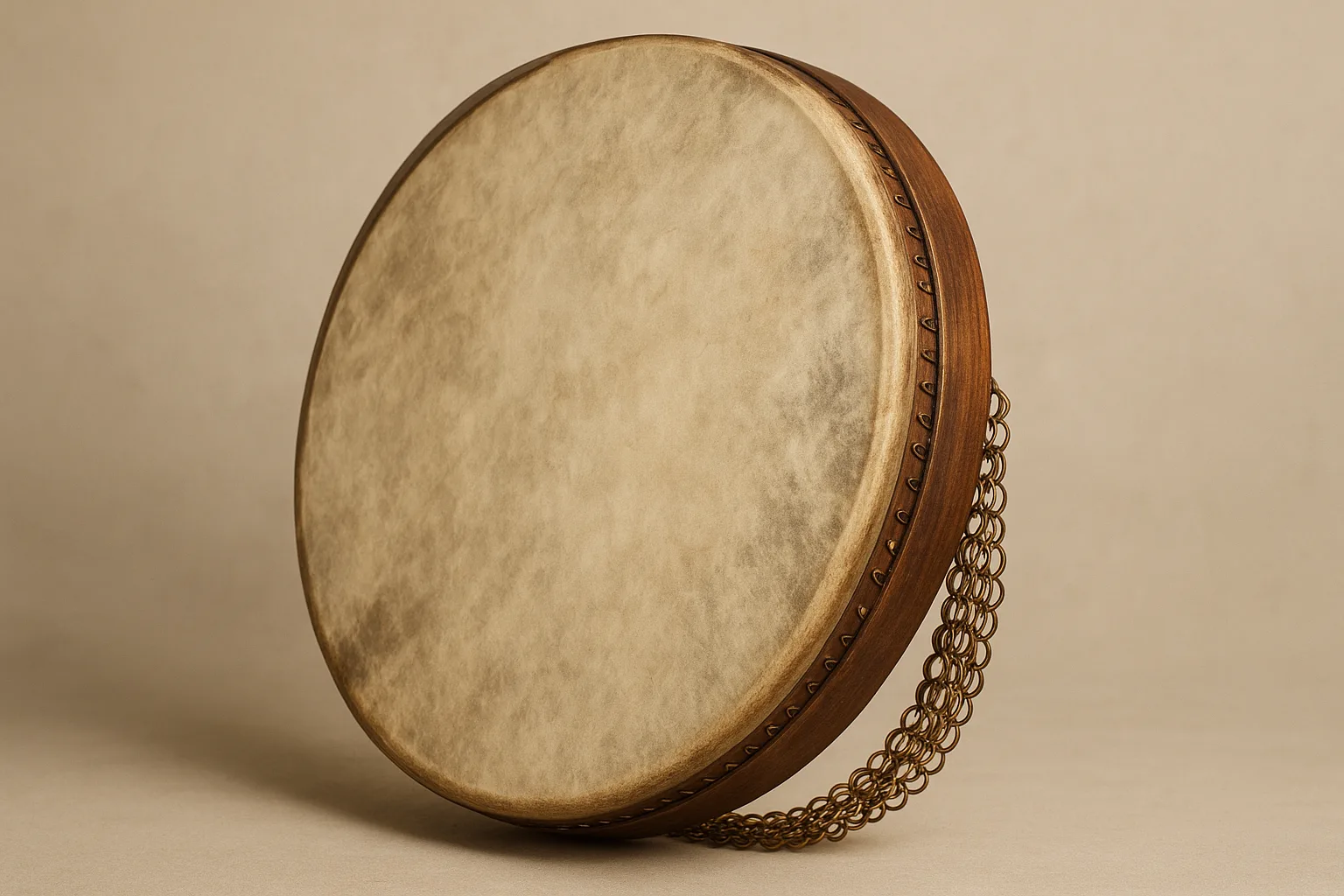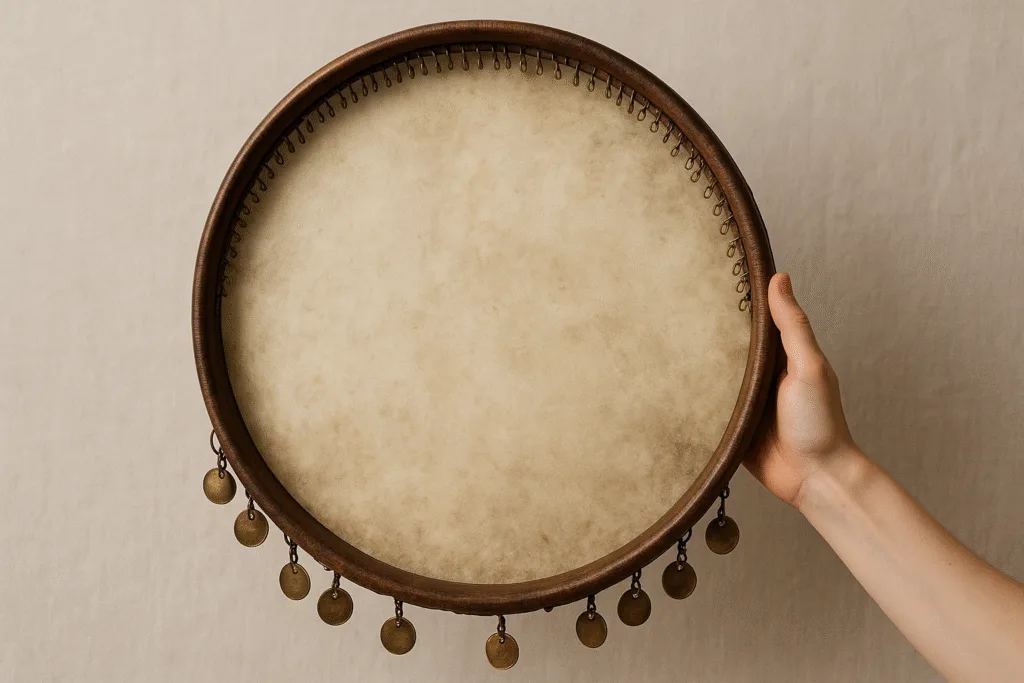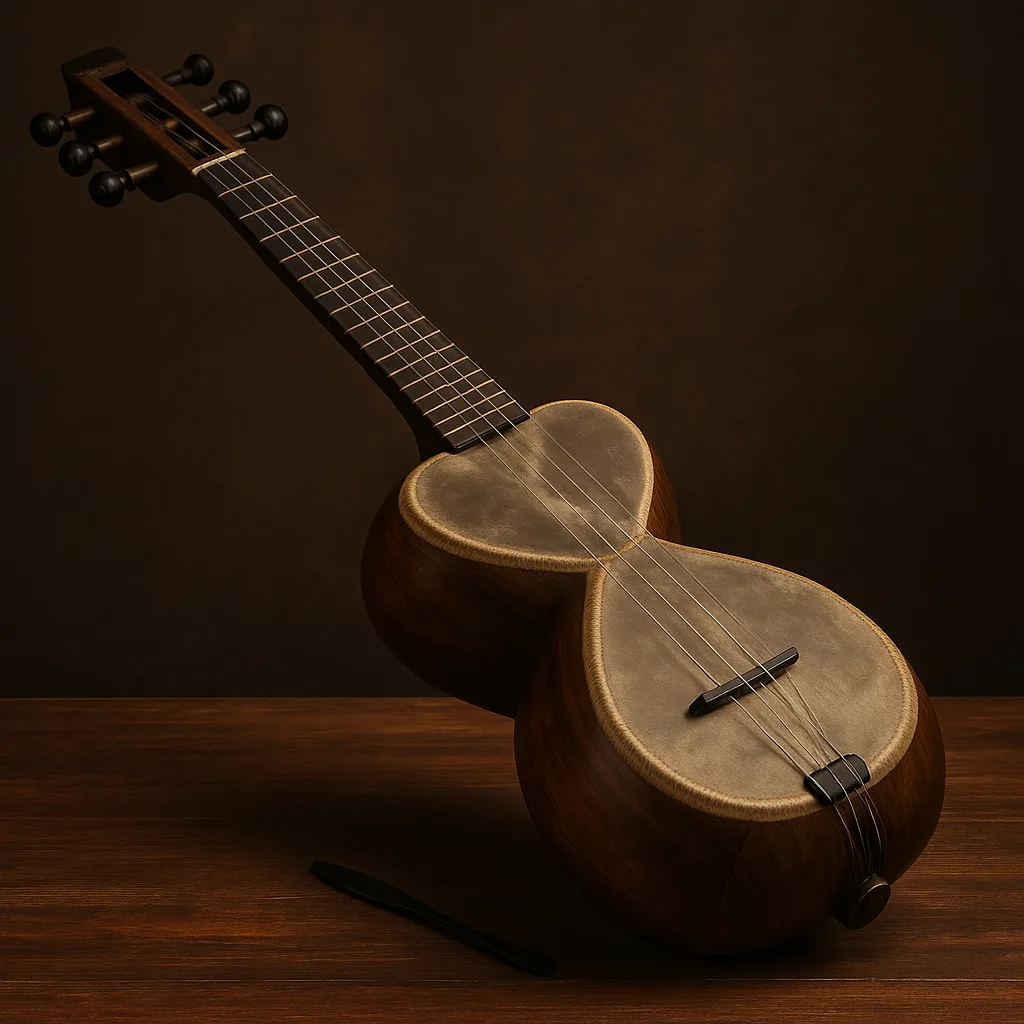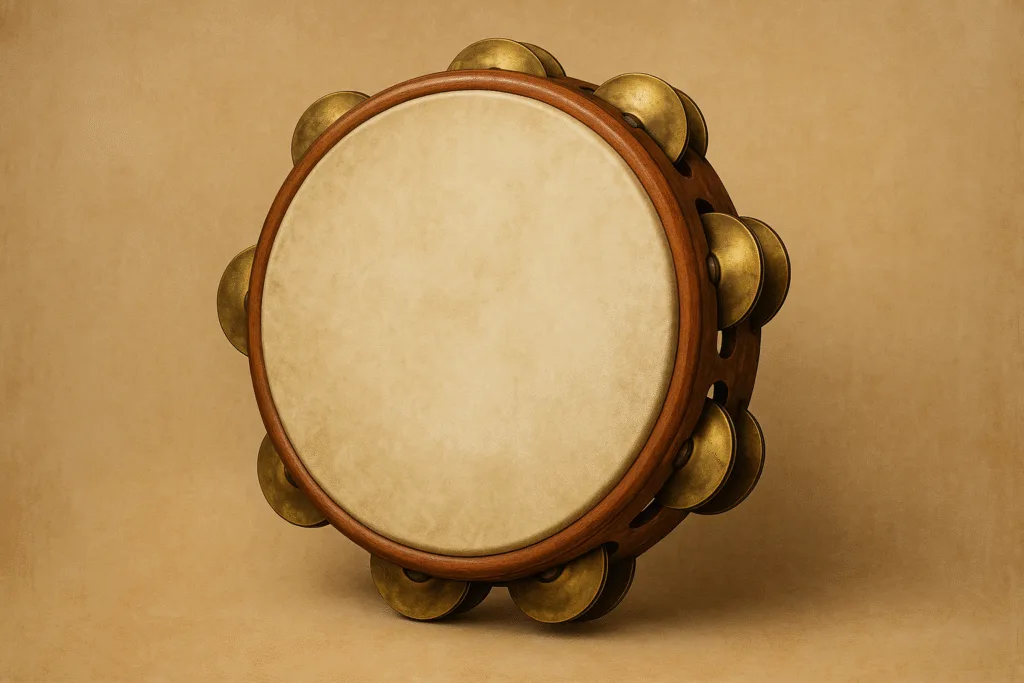Daf Reference Table
| Category | Details | Notes |
|---|---|---|
| Rhythmic Cycles (Usûl) |
| Cycle accentuation varies by region. |
| Techniques |
| Used for clarity, speed, and timbre contrast. |
| Instrument Specs |
| Choose specs based on context (stage vs. studio). |
| Recording Tips |
| Maintain natural sustain and avoid harsh highs. |
| Pedagogy (14-Day Plan) |
| Progressive buildup for stamina and control. |
| Common Mistakes |
| Quick fixes improve tone and endurance. |
| Contexts |
| Cultural respect is essential in rituals. |
Regional Style Map and Rhythmic Logic
In daf performance, the rhythm language is based on usûl (the system of meter and accents), which varies by geography. Below are some of the most common patterns and practical accents heard on stage:
- 5/8 — Dum-tek-tek | Dum-tek (2+3 or 3+2); common in Kurdish dance accompaniments.
- 7/8 — Dum-tek-tek | Dum-tek-tek-tek (2+2+3); as the tempo increases, filling with riz helps maintain clarity.
- 10/8 — Dum-tek-tek | Dum-tek-tek | Dum-tek (3+3+2+2); in long cycles, the swinging of the rings naturally highlights the “second beat.”
- 4/4 — Pop/rock foundation in modern arrangements; using shake brings out the off-beat.
In Iranian classical music, the dastgâh modality’s fast zarbî (percussive) sections highlight micro-accents with combinations of riz, dum and tek. In Sufi rituals, long zikr cycles are smoothed by the “ring sizzle,” so wrist-based shake becomes essential.

Advanced Technique Lab: Detail and Control
Riz (continuous roll) in three steps
- Contact: Touch the skin with the least possible fingertip surface; unnecessary friction spoils the tizz and suppresses the ring resonance.
- Distribution: Split 4 strokes into two fingers + two fingers (right hand) for balance at higher speeds.
- Ring control: Shake the frame with a micro forward–backward movement (~1 cm) to stabilize sustain.
Ghost note and leaving “air”
In dense playing, use very light ghost touches around main accents to create breathing space. Especially useful in short cycles like 7/8 to avoid overcrowding.
Ring choke (muting the jingles)
Lightly grip the inside of the frame with the left thumb to reduce ring freedom by 10–20%. In the studio, this clarifies the jingle texture at high BPM passages.
“Alternating edge” stroke
Play with the right index–middle on the edge and the left ring–little near the center in alternation, creating timbre contrast; common with string/santur accompaniments.
Buying Guide: Authentic Tone, Portable Body
- Weight: Depends on the number of rings; for stage, ~0.9–1.4 kg reduces fatigue.
- Diameter: A sweet spot for beginners and stage is ⌀ 50–55 cm; larger (⌀ 60 cm) gives deeper dum.
- Head material:
- Natural (goat/fish) — warm, responsive; sensitive to humidity.
- Synthetic — stable tuning, reliable on stage; brighter high range.
- Ring configuration: More rings = longer sustain; medium density is more controllable in recording.
- Edge bevel: A softened edge protects wrist/joint health during long sets.
Stage Setup and Recording: Small Touches for Clarity
- Miking: With one mic, place a small-diaphragm condenser 30–40 cm away, slightly off-center. With two mics, a close + room combo gives natural width.
- EQ guide: Keep the dum body clean around 120–180 Hz; ring brightness around 7–12 kHz. If harsh, soften with a shelf at 8–10 kHz.
- Compressor: Medium attack (10–20 ms), fast release; ratio 2:1–3:1; gentle enough not to kill the “breath” of riz.
- Monitoring: If the stage wedge is too close, ring resonance increases; move wedge to the side or prefer IEM (in-ear monitors).
Pedagogy: 14-Day Mini Roadmap
- Days 1–3: Grip, dum/tek distinction, 60–70 BPM in 4/4.
- Days 4–6: Riz mechanics; 5-minute blocks at 80–100 BPM.
- Days 7–9: Accent studies in 5/8 and 7/8; use metronome with sub-clicks (not just tick-tick, but “click-subclick” for feel).
- Days 10–12: Shake balancing; compare short vs. long sustain with ring control.
- Days 13–14: 10-minute performance simulation: intro–development–climax–ending; use ghost strategy for breathing space when fatigued.
Cultural Protocol: Respect in Ritual Contexts
In ritual environments, ask permission before filming/using phones. If you must place the daf on the ground, keep the head facing up. In some venues, gender, clothing, and spatial rules must be observed. The daf’s role here is not just “rhythm” but a communal voice serving the flow of zikr.
Role in Arrangement: An Orchestral Layer on Its Own
- Santur/Kamâncheh triangle: Balance mid–high density by thinning ghost and shake textures.
- Pop/Electronic: Clean dum regions overlapping with bass drum using HPF at ~80–100 Hz; add “air” with high frequencies.
- Film/Game: Long sustain rhythms build tension; crescendo shake makes scene transitions powerful.
Mini Glossary (Terminology)
- Dum: Center/low frequency stroke; body resonance.
- Tek/Ka: Edge/high stroke; articulation.
- Riz: Fast, evenly distributed micro-stroke chain (roll).
- Usûl: Meter + stable accent structure (rhythmic DNA).
- Shake: Short wrist shake to activate jingles.
Six Common Mistakes (and Quick Fixes)
- Ring dominance: Excessive jingling — shorten with ring choke, soften at 8–10 kHz in EQ.
- Bass muddiness: Blurry dum strokes — play closer to the skin, adjust close mic to 35–45 cm.
- Uneven riz: Try finger distribution 2+2 or 3+1; use sub-click metronome.
- Ergonomic issues: Wrist pain — choose a soft-beveled model, take “shake” breaks.
- Tone imbalance: Natural skin moisture — short warm drying; no need on synthetic heads.
- Over-decoration: Playing to “show” instead of “tell” — use ghost notes to simplify accents.
Listening/Viewing (Suggested Sources)
- Bijan Kamkar — Daf & Rabab playlist (rich dum/tek balance, ensemble feel)
- Mohammad Reza Mortazavi — Solo performance (advanced riz and sustain architecture)
- Pejman Hadadi — Short introduction (basic strokes and grip technique)
- Kurdistan Daf Festival — Ensemble example (multi-ring sound and choreography)
References (Official and Academic)
- UCLA Herb Alpert School of Music — Ethnomusicology and Iranian rhythm pedagogy (academic source).
- Republic of Turkey Ministry of Culture and Tourism — Intangible Cultural Heritage and ritual contexts (official source).



